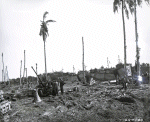NavSource Online: Amphibious Photo Archive
USS LST-269
International Radio Call Sign:
November - Papa - Charlie - Victor
NPCV
Awards, Citations and Campaign Ribbons
Precedence of awards is from top to bottom, left to right
Top Row - American Campaign Medal - Asiatic-Pacific Campaign Medal (4) - World War II Victory Medal
Bottom Row - Navy Occupation Service Medal (with Asia clasp) - Philippines Presidential Unit Citation - Philippine Liberation Medal (2)
Personal Awards
Purple Hearts (2 KIA, 21 October 1944)
